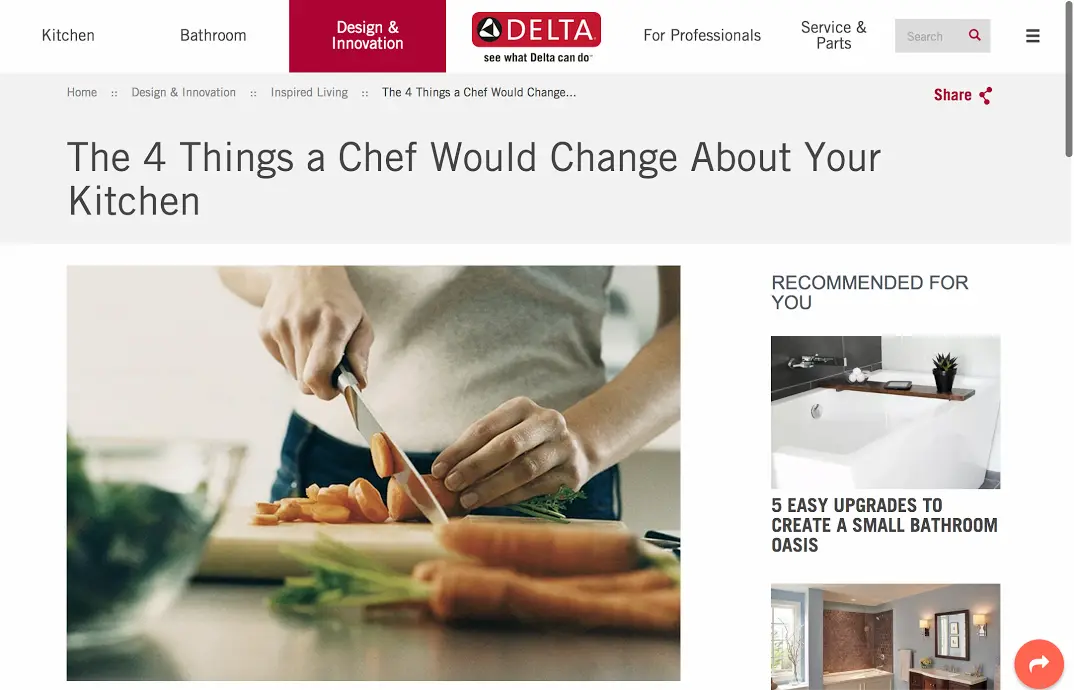Personalized marketing with machine learning isn’t just for Netflix and Amazon.
Plumbing manufacturer Delta Faucet, a 60-year-old company, used content marketing personalization solution OneSpot to boost pageviews by 49% and quadruple on-site engagement.
OneSpot’s machine learning and natural language processing algorithms analyzed Delta Faucet’s site and users to predict which content would produce the best results, then personalized the content displayed to each user when they visited the site.
Thanks to machine learning, Delta Faucet is now able to provide hundreds of thousands of monthly visitors with a one-to-one marketing experience.
Related Read: What Is Machine Learning?
“While the volume and quality of our content is important, delivering it through a relevant, personalized online experience is equally critical for forming meaningful connections and driving business results,” said Delta Faucet marketing manager Jake Frick.
Delta Faucet used four OneSpot tools to achieve content personalization at scale:
- OneSpot OnSite — Personalizes content using predictive modeling that takes into account a user’s individual interest profile and unique tastes.
- OneSpot ReAct — Remarkets content to users when they leave the site.
- OneSpot InAd — Attracts new users to the site with helpful, engaging content.
- OneSpot Insights — Tells the Delta Faucet editorial team what content works to inform future activities.
The results?
Delta Faucet was able to personalize content for each of the 500,000 visitors it sees every month. The brand served those visitors more than 17 million personalized articles. And the OneSpot OnSite content recommendations boosted pageviews per user by 49%.
The personalization technology also improved how Delta Faucet brought new users to the site.
More than 45% of visitors targeted by OneSpot InAd clicked through and stayed on the page for at least 40 seconds.
This wasn’t just about getting eyeballs on the brand’s content. Content recommendations translated into real revenue. Delta Faucet found that users who consumed more than three pieces of content were four times more likely to have also clicked a call-to-action button, such as “Where to Buy,” on the website.
It seems that machine learning is one great way to make your marketing more appealing to humans—and you don’t need to be a tech company to deploy it.
Be sure to read the full Delta Faucet case study over at OneSpot for more details on how marketing and machine learning created results. (And be sure to subscribe to the Marketing AI Institute for regular tips on how to benefit from AI in marketing.)
Have An Marketing Artificial Intelligence Case Study to Share?
At the Marketing AI Institute we’re all about making artificial intelligence approachable and actionable. Publishing case studies is one of the best ways to help marketers understand the power and potential of AI.
So, if you know of a brand that has driven performance through AI, get in touch with us here.
Mike Kaput
Mike Kaput is the Chief Content Officer at SmarterX and a leading voice on the application of AI in business. He is the co-author of Marketing Artificial Intelligence and co-host of The Artificial Intelligence Show podcast.


